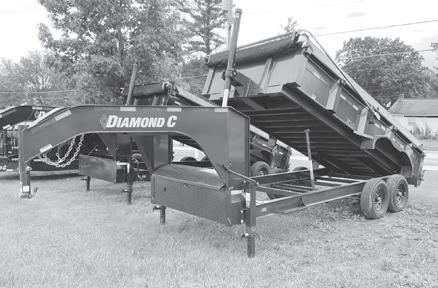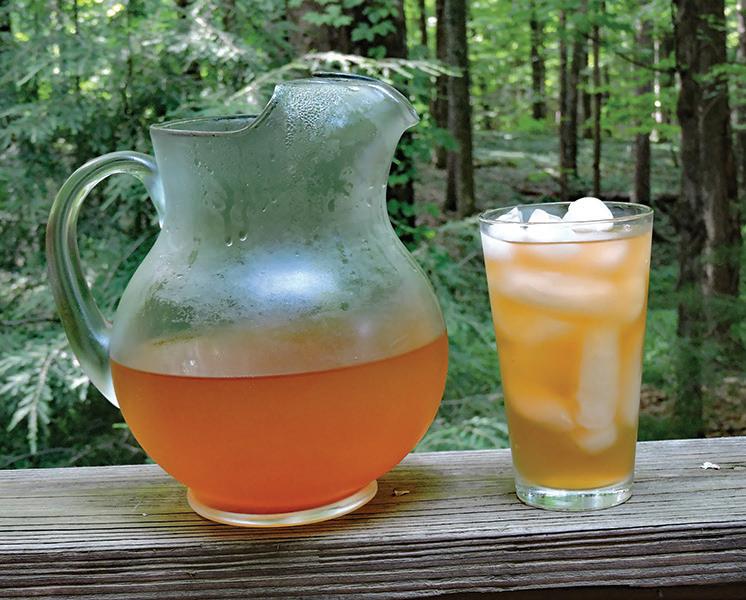
5 minute read
My Grandson’s Loan
This year our grandson stays two weeks and time is flying fast. A nine-year-old can steal your heart. I wish the days would last.
We finished planting fence posts. It was time to head on in. We grabbed a stack of grandma’s cookies from the cookie bin.
Advertisement
My grandson chomped a cookie down before I took a bite. And then he asked a question he’d been trying hard to fight.
He took a chair right next to me. Said, “How about a loan?” I told him that my pocketbook was dang near skin and bone.
He prob’ly knew I had a little money tucked away. I save for those emergencies we call a rainy day.
I quizzed my grandson ‘bout the loan. “How much you got in mind?” He said, “I’d like five dollars, please. I’m kinda in a bind.”
As grandpas do, I told him, “I can float you extra cash. Let’s go find Grandma’s Bible. That is where I keep my stash.”
I slipped him five new dollar bills, plus five more Ones to boot. I told him I was cleaning out our Bible filled with loot.
My grandson’s smile was almost like he’d won the lottery, or maybe like my silly mug when eating bakery.
But then I told my grandson, “Back when I was nine years old. We didn’t have much money, but our life was rich as gold.
“Each morning we were up at five and out to milk the cows. And some of us were sleepyheads, not easy to arouse.





“We fed the horses, gathered eggs, then caught the bus to school. We always ate a breakfast. Even now it makes me drool.
“We never had allowance, but we had a horse to ride. And bullets for the .22 my father would provide.

“So, no one gave us money. We all learned to do without.” That’s when I said, “Oh by the way, what is this loan about?”
He said, “You’re needing brand new socks. Your toes are sticking through. That’s why I needed cash to get a pair of socks for you.”
I gazed down at my grandson. Now his purpose came to light. Said, “Let’s head on down to Merckle’s. We’ll have ice cream floats tonight.”
(Bryce Angell’s father was an outfitter and guide for 35 years, and Bryce was there to shoe and care for the horses and help him do the cooking. Bryce is from Idaho and still rides into the Tetons, Yellowstone and surrounding areas. His poems are mostly of personal experience. He can be reached at angellranch62@gmail.com.)

Beginning in May, terminal, coneshaped clusters of greenish-yellow flowers begin to bloom. Pollinated by honeybees and other insects, these structures eventually mature into compact clusters of round, hairy fruits known as drupes. Not all of the shrubs will produce fruit, as males and females occur on separate plants. The fruit, up to 8 inches in length, begins to ripen in June.
Beware poison sumac. Staghorn sumac should not be confused with the much-feared poison sumac (Toxicodendron vernix). This plant is covered with a chemical called urushiol.

Simply touching poison sumac will cause a rash even nastier than that delivered by poison ivy, which carries the same resin. Luckily, poison sumac is less common, due to the fact that it only grows in wetland habitats and is hardly ever found in association with the staghorn sumac.
In addition to its affinity for moist areas, there are other definitive ways of telling the two species apart. Probably the most obvious difference is the berries. Poison sumac has clusters of waxy white berries that grow separately and hang down as opposed to the staghorn sumac berries which are red and fused together.
The compound leaves are also dif- ferent. While the staghorn sumac has leaves that are serrated, poison sumac leaves have smooth edges. And finally, poison sumac lacks the hairy branches that give staghorn sumac its name. Rhus juice. Staghorn sumac has many attributes. It is high in vitamin C and rich in multiple antioxidant compounds. The shoots can be peeled and consumed raw. All parts of the plant except the roots can be used as a natural dye. Native Americans mixed the dried leaves and berries with their tobacco. Beekeepers often use the dried sumac fruit as a source of fuel for their smokers.
Some of my fondest childhood memories involve staghorn sumac.
Summers were always spent making and drinking sumac tea. My friend and I had an annual tradition of making “Rhus juice” (Rhus is the genus name for the plant).
When the sumac fruit was at its deepest red, we would gather 15-20 clusters and place them in a bucket. We used a potato masher to slightly crush the clusters and separate the individual berries. We then poured cold water over the entire mixture and allowed it to sit overnight.
The next day we were anxious to strain the concoction. Using cheesecloth helped ensure that none of the little hairs covering the berries made it into our drink. Once we had the finished liquid, we would add sugar to taste and pour it into a glass full of ice.
This sumac lemonade was the most refreshing treat on a hot day. It was a well-earned reward for all of our hard work. I still make Rhus juice today, as we have a beautiful patch of sumac on our farm. Rhus juice can also be used to make jelly.

Benefits to wildlife. Finally, staghorn sumac is an incredibly important food source for wildlife. The fruit, which persists on the plant throughout the winter and into the following spring, no doubt helps many birds and mammals survive.
When all other seed and berry sources have been depleted, it’s the sumac that is heavily utilized by wildlife. Eastern bluebirds, American robins, gray catbirds, black-capped chickadees, several species of woodpeckers, roughed grouse and wild turkeys, to name a few, all relish the treat. In fact, the U.S. Department of Agriculture estimates that 300 species of songbirds consume the fruit.
Of course, the plant has much to gain from this. Each red cluster contains up to 700 drupes, each containing a seed. As birds consume these, they unknowingly fly off “depositing” the seeds to germinate in new locations as they go. Mammals rely on the sumac as well. White-tailed deer, rabbits and mice all browse on the foliage.
As summer winds down and autumn begins to take hold, the staghorn sumac puts on a show as its foliage transforms into brilliant shades of orange, yellow and red. As you gaze at the spectacle, a movement catches your eye.
A white-tailed deer moves slowly among the leaves, browsing as it goes. But there is no confusing it with the plant now. Its mature antlers, having lost their velvet covering, are smooth and shiny in the sunshine, bearing little resemblance to the persistent velvety stems of the plant that bears its name.
(A lifelong resident of Geauga County in northeast Ohio, Tami Gingrich recently retired from a 31-year career as a Biologist/ Field Naturalist with Geauga Park District. She has been a licensed bird bander for over 30 years. Her hobbies include photography, lepidoptera, gardening and spending time with her husband on their small farm in Middlefield, Ohio. She welcomes any questions or comments at Royalwalnutmoth@ gmail.com and will gladly consider suggestions for future articles.)







